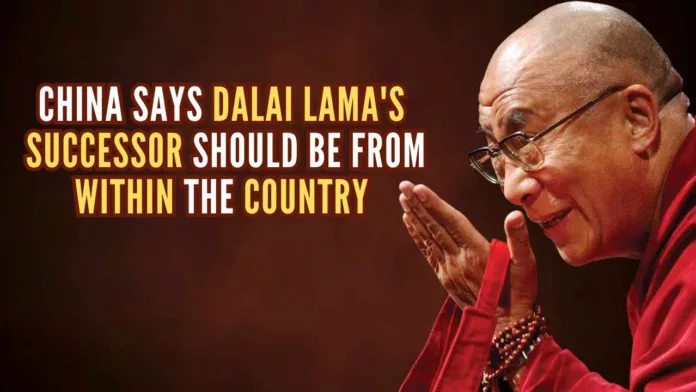
Who will decide on the Dalai Lama’s successor — Dalai Lama himself or Beijing?
Flexing muscles over Tibet, China on Friday asserted that any successor to 88-year-old Dalai Lama should be from within the country and his heir needs to have its approval. All “reincarnated Tibetan living Buddhas, including Dalai Lamas and Panchen Rinpoches, must be looked for within the country, decided through the practice of lot-drawing from the golden urn, and receive approval from the central government,” a white paper unveiled in Beijing by the Chinese government said.
China, which refers to Tibet as Xizang, is increasingly anxious as the octogenarian Dalai Lama, who lives in exile in Dharamsala in India, will take the lead in appointing his successor, which could have a profound spiritual impact in the Himalayan region as his legacy is ingrained in the minds of Tibetan masses. Though Beijing asserts the Dalai Lama’s successor needs its approval, geo-political observers say it remains concerned as the present Panchen Lama, the number two spiritual leader who was appointed by it after unseating the boy nominated by the Dalai Lama, has not gained much traction in Tibet.
The white paper titled “Communist Party of China (CPC) Policies on the Governance of Xizang (Tibet) in the New Era: Approach and Achievements” also highlighted the crackdown to combat separatism in Tibet. “The fight against infiltration, subversion, and secession continues… Xizang adopts a proactive approach to combat secessionism,” it said.
“The reactionary nature of the Dalai Group has been exposed and denounced, and the regional government relies closely on the people of all ethnicities to resist all forms….. It is now deeply rooted in the people’s minds across the region that unity and stability are a blessing, while division and unrest lead to disaster. They are ever more determined to safeguard the country’s unity, national sovereignty, and ethnic solidarity,” said the whitepaper issued by China.
China has also expressed its strong opposition to the United States appointing a “Special Coordinator for Tibet Issues” and criticized Washington’s assertion that Beijing should not interfere in the selection of the Dalai Lama’s successor. On the present Dalai Lama, who is 14th in the long line of succession, China reiterated he is “by no means just a religious figure, but rather a political exile, who has long been engaging in anti-China separatist activities, and attempting to split Tibet from China.” The white paper denies any crackdown on Tibetan Buddhism in Tibet, saying China fully guarantees the freedom of religious belief and promotes Tibetan language along with Mandarin.
“Religious activities are carried out in an orderly manner. The region today hosts over 1,700 sites for Tibetan Buddhism activities, approximately 46,000 Buddhist monks and nuns, four mosques, about 12,000 native Muslims, and one Catholic church with over 700 believers,” the paper said. It also highlighted infrastructure in Tibet and the border areas in India’s Arunachal Pradesh, which it claims as part of Southern Tibet. China has built high-speed trains in Tibet near the Indian border areas, which enables it to speedily move troops. “Efforts have been made to develop border areas and improve people’s lives there. Plans and specific programmes for developing villages and towns have been formulated,” the paper said. It also projected that Tibet is gearing up to become a gateway to South Asia with rail and road connectivity through Nepal. Tibet is transforming itself into a vital channel for the country’s increasing opening up towards South Asia, it said.
For all the latest updates, download PGurus App.
- Supreme Court rejects plea to tally all VVPAT slips with EVM votes; says ‘no going back to paper ballot’ - April 26, 2024
- US report citing human rights violations is deeply biased: India - April 25, 2024
- Kotak Mahindra Bank shares tank 13%. Market Cap erodes by Rs.37,721 cr post-RBI action - April 25, 2024










